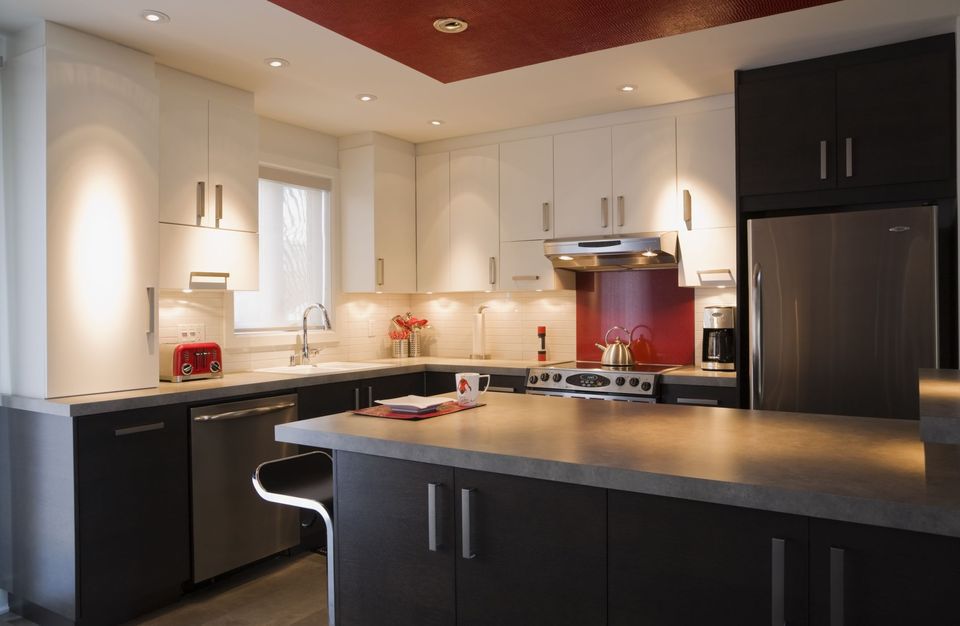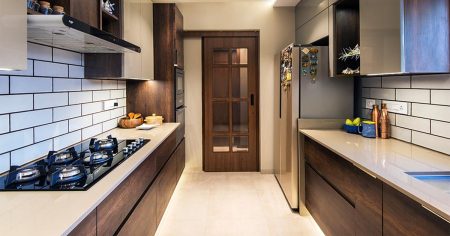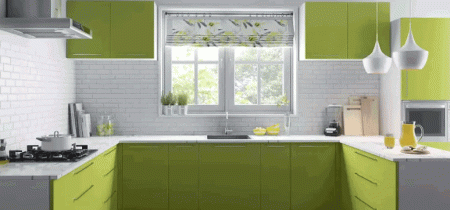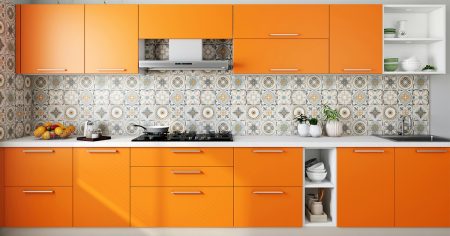Kitchen electrical wiring can easily be accomplished by first creating a kitchen electrical wiring plan. When planning your kitchen wiring, you must take into account appliances that will move from place to place, appliances that stay stationary, outlet placement for optimal usage, lighting locations for optimal light coverage in areas needed, and any specialized outlets or flexible connections, such as in the case of built-in ovens.
A great plan is to plan for future appliances that you don’t have now, or possibly have not even been invented yet. Look back 30 years and remember what you had for kitchen appliances back then. Now look around at the kitchen appliances you now have and cannot live without. As you can see, without any outlets and circuits you have now, you’d never be able to power them up with the old wiring plan.
Add a few extra outlets in the odd places like in the corners above the cabinets, next to the sink on both sides, and over very small cabinets to make sure you always have an outlet when you need one. And plan for your lifestyle and intended usage, too: If you have a tech-savvy household, plan to install USB outlets near workstations or other accessible spots for charging phones and tablets.
Small Appliance Branch Circuits
An appliance branch circuit supplies power to one or more outlets that appliances are connected to and that has no permanently connected lighting fixtures, that is, that are not connected to a part of the appliance. For instance, an oven with an oven light.
The National Electrical Code (NEC) states that a general-purpose branch circuit is a circuit that supplies two or more receptacles or outlets for lighting and appliances.
Minimum NEC requirements, as per Section 210.52(B), requires that the pantry, dining room, and kitchen, including the countertop outlets, be supplied by at least two separate circuits of 20 amps. Of course, you’ll want to add many more outlets and circuits for added convenience. Remember that adding additional outlets to these circuits is allowed in the pantry, dining room, and the kitchen.
Kitchen Appliance Circuits
Kitchen appliance circuits that need to be separate include garbage disposers, dishwashers, refrigerators, microwave ovens, electric ovens, electric ranges, and a dedicated circuit for a dining room receptacle.
Countertop Outlets
When you consider placing outlets for countertop use, remember that small appliances like crock pots, coffee pots, electric griddles, and pizza ovens come with short two-foot cords. Try to imagine where you’ll be using each small appliance that you have and position the outlets accordingly. Remember that an outlet is required within two feet of each side of the sink and an outlet no more than two feet from the end of the counter. In no circumstance is there to be more than four feet between countertop outlets.
GFCI Outlets in Wet Areas
In Section 210.8(A)(6), the NEC requires that all countertop outlets be ground-fault circuit interrupters (GFCIs). This GFCI protection can be in the form of either a GFCI receptacle or a GFCI circuit breaker.
Lighting
Lighting branch circuits only require a 15-amp circuit. If you have a lot of ceiling fans installed in your home, you may opt to install two-amp circuits for these outlets so that each fan (and its motor) has its own circuit. Ceiling fans incorporate both a fan motor and a light fixture with one or many bulbs. The load of one may not be much, but include a few on the same circuit and the 15-amp circuit doesn’t cut it.
When laying out the lighting fixtures, try to provide a uniform lighting layout for optimal light coverage. Try to wire circuits so that if one circuit trips, there will be another circuit with lighting close by so the lights don’t all go off at once.
Three-way switches should be installed where required to allow you to walk to and from any doorway allowing access to the light switching before entering a room. If lamps are to be used that plug into outlets, try installing split outlets that leave one-half of the outlet hot and the other connected to a switch to turn on the floor or desk lamp without having to cross the dark room to turn it on.
Read the full article here














